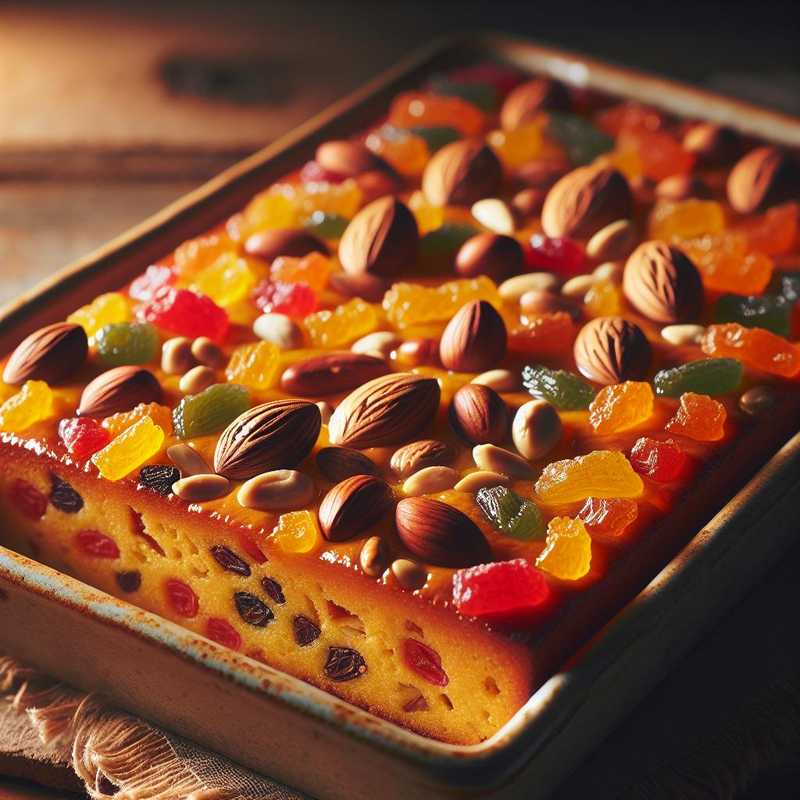Roman Pangiallo
17/11/2023Roman Pangiallo is a traditional Christmas sweet from the Lazio region, particularly in Rome. Traditionally, it was made to celebrate the winter solstice as a good omen, hoping for the return of the sun and the lengthening of the days. Here is the recipe for you.
Ingredients
- 300 g of flour
- 150 g of sugar
- 150 g of honey
- 100 g of lard (you can substitute with butter if you prefer)
- 150 g of walnuts
- 150 g of hazelnuts
- 100 g of almonds
- 100 g of pine nuts
- 50 g of mixed candied fruit (orange, citron, etc.)
- 100 g of raisins
- 1 orange (grated zest)
- 100 g of dark chocolate
- 1 teaspoon of cinnamon powder
- 1 pinch of nutmeg
- 1 pinch of coriander powder
- 1 pinch of black pepper
- 1 packet of baking powder
- Saffron as needed
Preparation
- Start by lightly toasting the nuts (walnuts, hazelnuts, almonds, and pine nuts) in a non-stick pan for a few minutes to enhance their flavor. Let them cool down.
- In a large bowl, mix the honey, sugar, and lard until you obtain a homogeneous mixture.
- Incorporate the grated zest of the orange, the toasted dried fruit, and the candied fruit cut into small pieces, together with the raisins previously soaked in warm water and then squeezed.
- Dissolve the saffron in a little hot water and pour it into the mixture.
- Add the dark chocolate melted in a double boiler, cinnamon, nutmeg, coriander powder, and a pinch of black pepper.
- Blend in the sifted flour with the baking powder, kneading until you get a homogeneous and compact mixture.
- Form balls with the dough and flatten them slightly to give them the characteristic shape of the Pangiallo.
- Place the Pangialli on a baking sheet lined with parchment paper and bake in a preheated oven at 180 °C for about 30 minutes or until they are golden.
- Remove the Pangialli from the oven and let them cool completely before serving.
Curiosity
The name “Pangiallo” comes from the prolonged cooking that gives the sweet a golden color, reminiscent of the yellow of the sun. Furthermore, the use of saffron emphasizes this hue. Traditionally, the round shape and golden color symbolize the return of the sun during the solstice.
